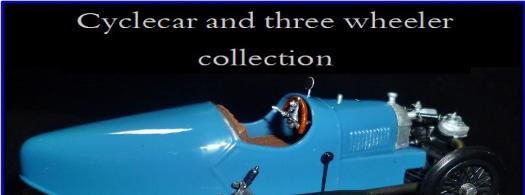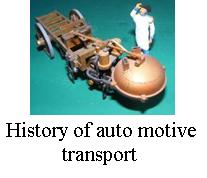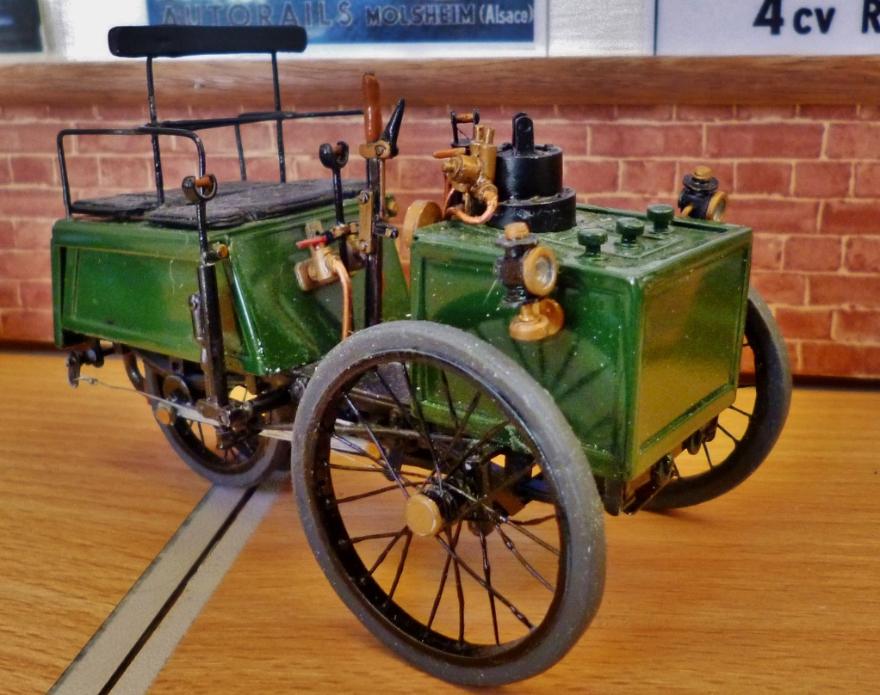
On 28th April 1887 the first organized motoring event took place. A 2 km (1.2 mi) course from Neuilly Bridge to the Bois de Boulogne. To be fair it wasn't much of an event, the promotion by Monsieur Fossier, chief editor of Paris publication “Le Vélocipède”, had been poor and there wasn't much of a turn out. But a steam tricycle built by De Dion, Bouton et Trépardoux won. It was driven by Georges Bouton and completed the course and was clocked at a very impressive speed of 60km/h thanks to a power of 1hp and a 50kg car! It is a bit much to claim it was a race as Georges Bouton was the only competitor who turned up; but he and his machine did complete the course easily.
The story of de Dion Bouton starts some years earlier when Jules-Albert, Comte de Dion, tracked down the workshop of brothers in law Georges Bouton and Charles Trépardoux. In 1882 the Count came across a shop selling scientific instruments and steam-powered toys in the Passage de Léon, close to the "rue de la Chapelle" in Paris. Recognising these were high quality items he enquired of the shopkeeper were they had been made. Count de Dion found the workshops of Trépardoux et Cie, in Puteaux, on the north-western edge of Paris, and entered in conversation about the posibility of them building a steam powered vehicle capable of pulling a carriage. At the time Trépardoux and Bouton were slaving away for an income of around 7francs a day. When the count offered them the opportunity fulfil their own dream of a steam automobile they were ready to say yes straight away, the immediate monetary improvement to 10francs a day was a welcome addition. After the usual negotiations the three of them set up a new firm; De Dion, Bouton & Trépardoux, in 1883.
Trépardoux was a graduate engineer who provided the scientific and theoretical background to the company's products. Georges Bouton was an equally brilliant engineer, arguably more intuitive than his brother in law. Count de Dion was the money in the business, much like Rolls would be to Royce about 20 years later. But in this case De Dion, described as an industrialist and automotive genius, kept himself very much in the know about the mechanical workings and production methods. He himself recognised the better options from the petrol engine and steered the company in that direction. In time this would be the reason for the company becoming just de Dion Bouton. Trépardoux being an advocate of steam resigned from the company in 1893 when they started building petrol engined vehicles. De Dion Bouton would go on to be the worlds largest motor car producer in the world for a while, and, they produced bicycles for much of the company's existence too.
Back to De Dion, Bouton & Trépardoux though. The company released it's first catalogue of products in 1886 and appointed Fernand Mérelle as the exclusive concessionaire for its products. When the 1889 Universal Exhibition was held in Paris (the Eiffel Tower was built especially for this occasion) De Dion, Bouton & Trépardoux exhibited their boilers and Mérelle displayed a variety of the firm's steam vehicles; one even reciever the award of a silver medal.
Our model is of one of the earliest De Dion, Bouton & Trépardoux steam quadricycles. It has a front-mounted patented wrought-iron vertical water-tube boiler, surrounded by the coke box. The water tank is to the rear of the vehicle beneath the dos-a-dos seating. The chassis is channelled steel and features semi-elliptic suspension front and rear. The front wheels are slightly wider than the rear ones but as the rear wheels are hidden in the body and very close together this doesn't really notice.
Breaking works on the rear wheels only via shoes acting on the rear tyres. These are hand, or foot, operated. Interestingly the tyres are pneumatic and must be one of the earliest examples of pneumatic tyres being used on a road vehicle, general use of pneumatic tyres wasn't taken up until into the 1900s. The most difficult system to identify when viewing the car is the steering system. There is no steering wheel, not even a tiller which was the typical method for the day. In stead steering is by a spade-handled twist-grip located on the right-hand side of the vehicle. One suspects the driver might have needed a strong wrist!
The actual engine is a pair of tandem-compound single-acting steam engines with high-pressure cylinders of 75mm bore, expansion cylinders of 115mm bore, and a common stroke of 90mm, which are mounted beneath the floor. The inlet and exhaust slide valves are operated by eccentrics, manual steam admission control located at centre of vehicle. The rear wheels are of course the driven wheels, this being achieved by overhanging cranks, the later single rear wheel steam tricycles would have a belt drive system instead (reducing weight).
Several of the early de Dion, Bouton and Trépardoux tricycles and quadricycles have survived and live in museums around the world.
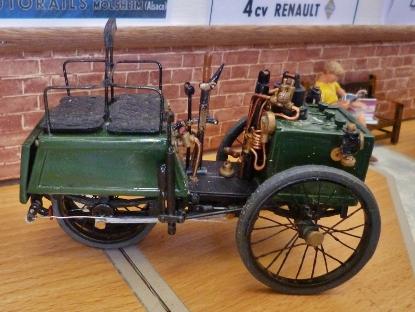
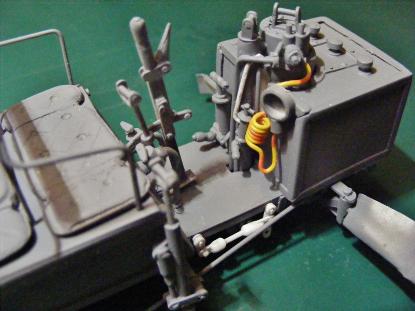
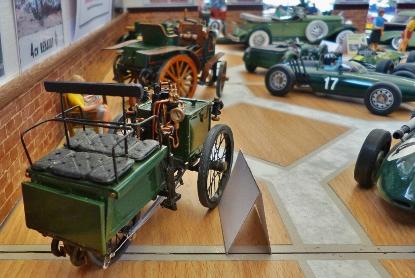
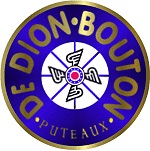
Scratchbuilt 1/24th scale
model Built by Rod
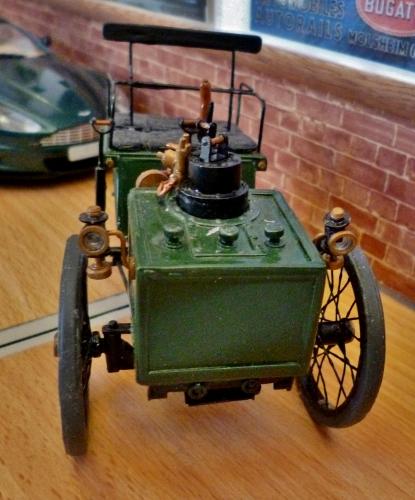
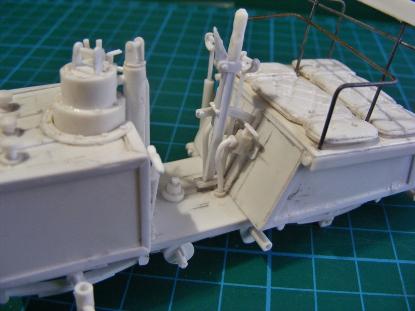
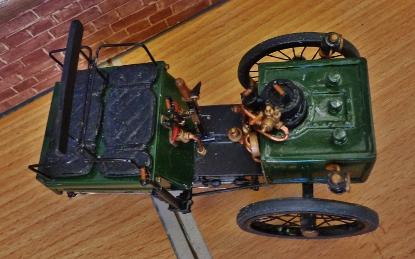
Scratch built by Rod from his own drawings and from photographs found online during Feb' 2012. This1/24th scale model is made from plastic card, rod and tube as well s other household items like wire. The hard part with sort of model is getting started. Making a scratchbuilt model is just the same as making a normal kit only you make the parts as you go along. Tips on scratch building can be found in our articles and projects pages.
The model is primed and mainly painted with Halfords acrylic car spray paints. Other paints used are Humbrol enamels, Revell and Citadel acrylic paints inks and washes.
RETURN TO :-
